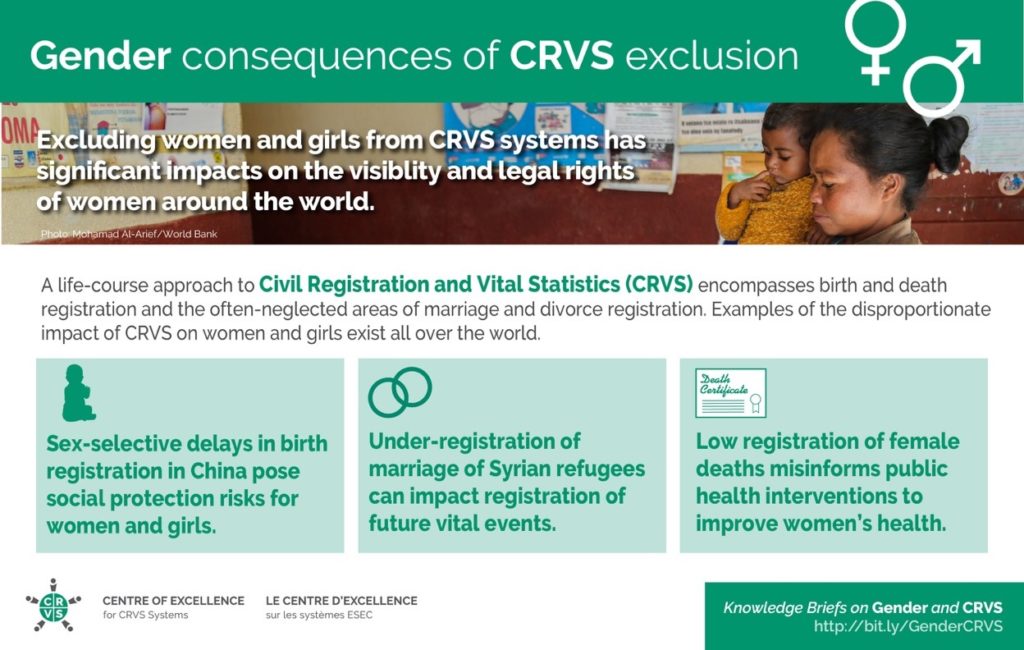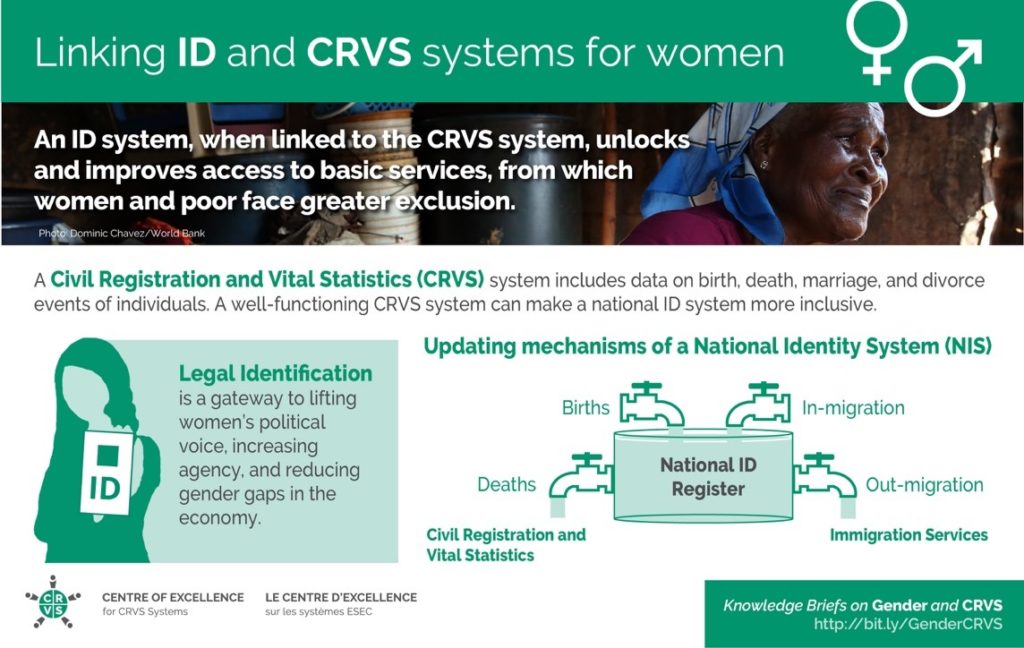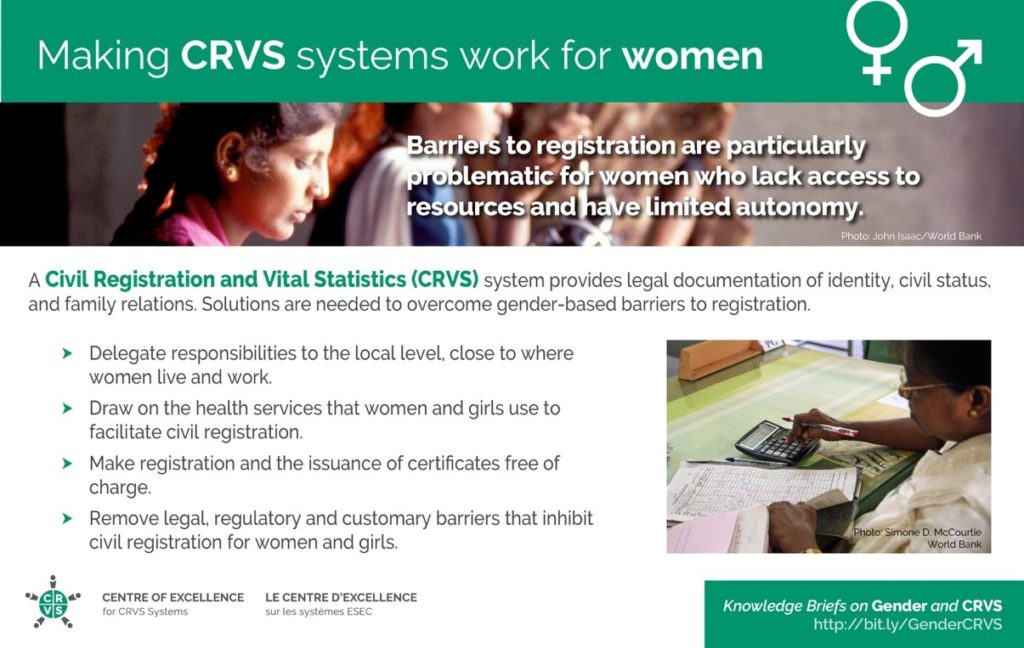Data can make a difference in addressing a slew of development challenges, but few opportunities have sparked more passion for us at Open Data Watch than achieving gender equality through better data—specifically through civil registration and vital statistics (CRVS).
CRVS systems, a key source of gender data, record key life moments such as births, marriages, divorces, and deaths and are critical for ensuring that all people, including marginal groups often left behind, are counted in society. Despite their importance for better gender data and improving the lives of women and girls, more than 100 developing countries still do not have functioning CRVS systems.
To address these challenges and to inspire a global commitment to strengthening CRVS systems, we partnered with the Centre of Excellence for Civil Registration and Vital Statistics (CRVS) Systems at the International Development Research Centre (IDRC).
Last February, to kick off the partnership, we helped host Making the Invisible Visible: CRVS as a Basis to Meeting the 2030 Gender Agenda—a first of its kind meeting that convened gender experts, policy makers, demographers, and statisticians to unpack the gender dimensions of CRVS systems and the barriers women and girls face.
The resounding conclusion? While “civil registration and vital statistics” may sound like a technical mouthful that should be left to the statisticians, it is a complex topic that can, and should be, applied across many fields.
CRVS touches on not only data but policy and legal frameworks, social and cultural norms, and equality and empowerment. It’s a subject that requires all hands (and minds!) on deck.
That is why, as an outcome to the meeting, the Centre for Excellence launched a series of knowledge briefs to fill a much-needed gap in resources on CRVS and gender.
The first knowledge brief, Why CRVS systems matter for women and girls, which launched in February 2019, provides a detailed introduction to CRVS systems and illustrates exactly why they are so important for women and girls.
We recently launched the second brief, Strengthening CRVS Systems, Overcoming Barriers and Empowering Women and Children, which dives deeper into specific issues and action-oriented solutions and highlights case studies from China, Syria, and Morocco.
It has been over a year and a half since that first meeting in Ottawa that inspired the knowledge brief series. Since then, we have brought the conversation to the United Nations World Data Forum in Dubai, the United Nations Statistics Commission in New York City, and most recently, Women Deliver in Vancouver. We, and many others—including Data2X—have made and will continue to make the case for how CRVS systems empower women and children.
Now, it’s time to turn this talk into action—all of which these papers, through this partnership, attempt to do. Whether it’s calling for linked CRVS and national ID systems; interpreting and recognizing social and cultural norms; engaging community actors to increase registration rates; or adopting a life-course approach, we hope these briefs provide a clear jumping off point for policymakers, stakeholders, and advocates alike.
For those looking to get their toes wet first, check out the visual summaries that we’ve created for each paper below.


Linking National ID and CRVS Systems: An Imperative for Inclusive Development

Empowering Women and Girls Through Civil Registration Systems

